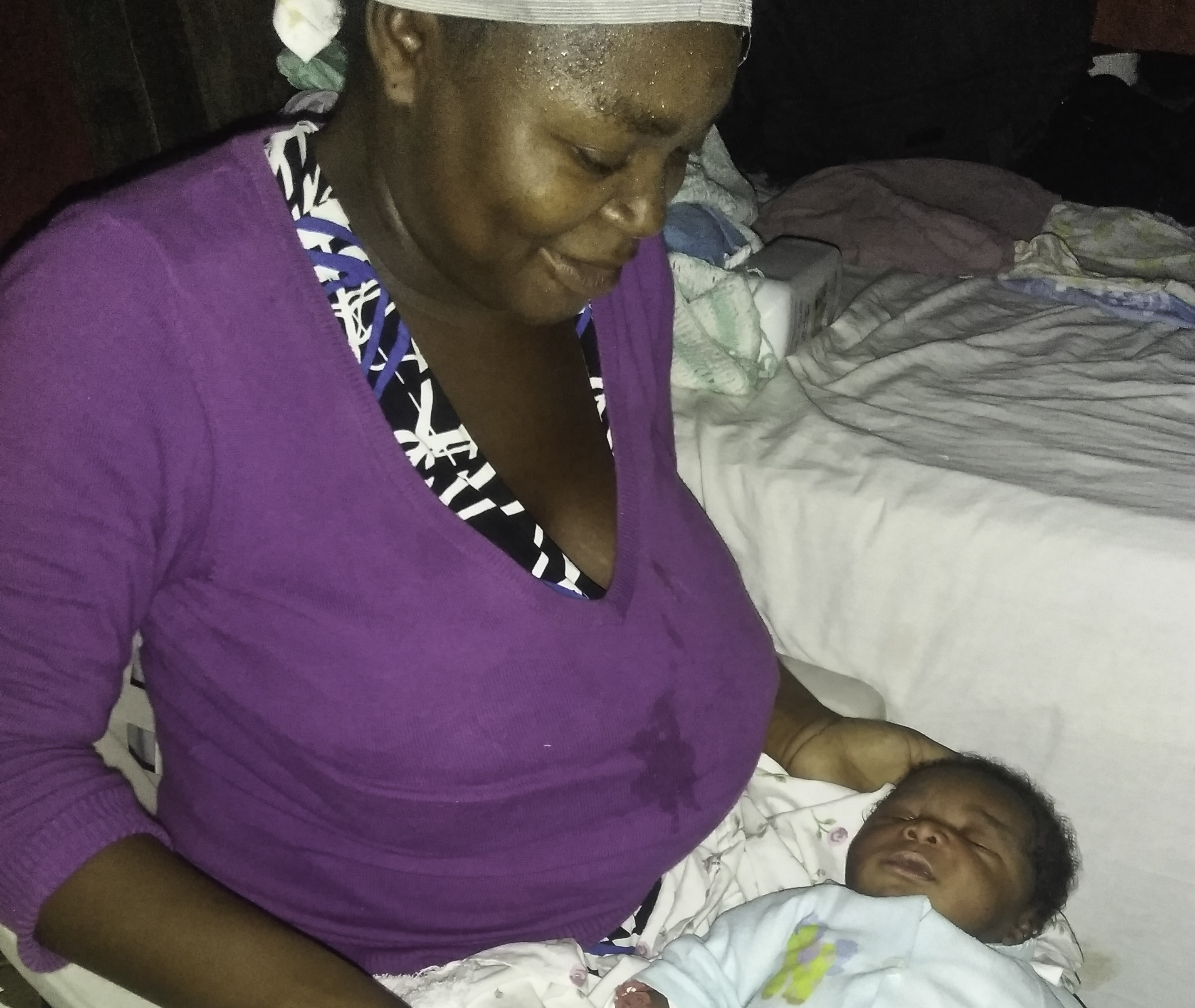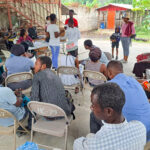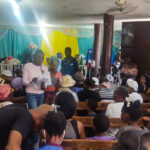Many stories at the Lamp make reference to dire threats to health and challenging medical treatment. This one is about something much simpler. Ms. Plaisirmon had already had two children when she enrolled in the prenatal care program at the Lamp. She received a battery of tests and then came regularly to the clinic for the next eight months. Her health was generally good – she was treated for an infection and mild anemia – and so was that of the baby. Lamp Community Health Workers (CHWs) came to her home several times to check in on her. She got an ultrasound and took her prenatal vitamins as prescribed. She received a delivery kit and an infant kit. When it came time to deliver, one of the CHWs went with her to the hospital to make sure that she had the support she needed. In the photo, she is back at home with her new baby boy (dressed in clothes from the infant kit). Her gratitude is boundless; she recalls the struggles — physical, financial and emotional — she had with her first two deliveries; she sends message after message to Lamp staff, thanking them for their accompaniment.
The idea of accompaniment is one that Dr. Paul Farmer made central to all of his medical theory. (Dr. Farmer is the founder of Haiti’s best large-scale health organization Partners in Health and was a crucial inspiration for the Lamp in its early days.) Health is best served, he felt, when the medical profession considers the whole complex of factors that cause ill health. In low income settings this means that one must accompany each patient, continually overcoming those factors that may block the path to good health. Ms. Plaisirmon’s story is an ordinary one, but it is an important one for the Lamp. It is a sign that we are on the right path.











